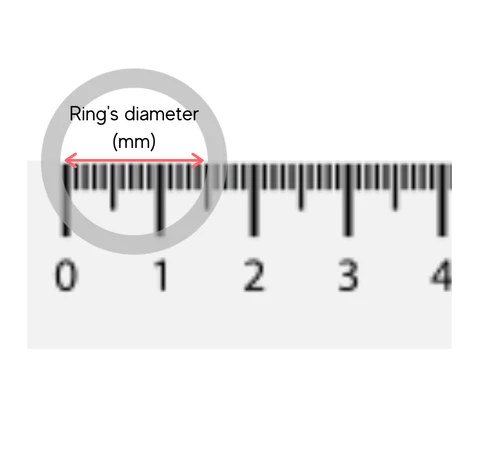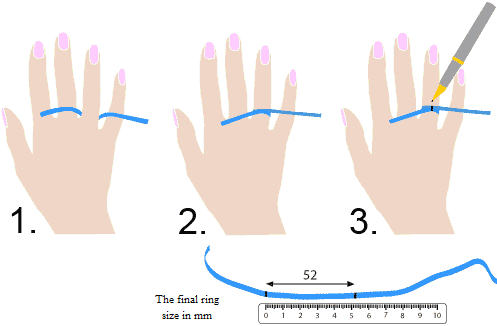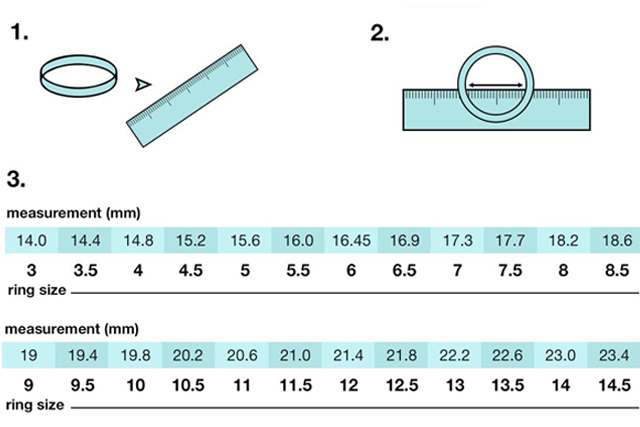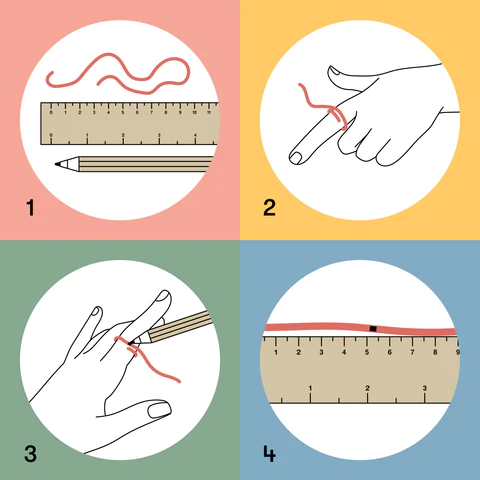Contents
Introduction
Accurately measuring ring size is essential to ensure comfort and style when wearing a ring. Whether it’s for an engagement or simply a fashion accessory, knowing the correct ring size is crucial. This article aims to provide a comprehensive guide on measuring ring size, covering historical background, key concepts and definitions, various measurement systems, traditional and alternative methods, adjustments for different ring styles, real-world examples, current trends, challenges, controversies, future outlook, and references.
Historical Background
Throughout history, ring size has held significant importance in various cultures. Rings symbolize love, commitment, and status, making it vital to obtain the correct size. In ancient Egypt, for example, the circle was believed to represent eternity, leading to the tradition of wearing rings on the fourth finger of the left hand. Ancient Romans utilized rings as a sign of authority and power, often bearing engraved seals. Understanding the historical significance of ring size helps us appreciate its relevance in contemporary times.

Key Concepts and Definitions
Ring size refers to the measurement of the circumference of a finger, typically the finger on which a ring is worn. It is important to consider factors such as finger shape and width when determining ring size. Finger shape can vary from slim and tapered to wide and knobby, which affects how a ring fits. Additionally, the width of the ring band can impact sizing. Different regions, such as the US, UK, and EU, have their own measurement systems for ring sizing, which is essential to understand for accurately determining size.
Main Discussion Points
Traditional Methods for Measuring Ring Size
One common method used in jewelry stores is the ring sizer or mandrel. These tools allow individuals to try on different sizes until they achieve the perfect fit. To determine ring size accurately, the jeweler slides the ring onto the mandrel, checking the size markers on the rod. Alternatively, individuals can measure their ring size at home using printable ring sizers or a string. By wrapping the string around the finger and measuring the length, one can compare it to a size chart to find the appropriate ring size.
Alternative Methods for Measuring Ring Size
With the advancement of technology, online ring size calculators and apps have gained popularity. These tools utilize algorithms and measurement inputs to estimate ring size accurately. To use online calculators effectively, individuals need to measure their finger circumference using a flexible measuring tape or a strip of paper. They can then input the measurement into the calculator, which provides an estimated ring size. While these alternative methods offer convenience, they may not be as precise as traditional methods.
Adjustments for Different Ring Styles
Ring styles can greatly influence ring size. Wider bands, for instance, may require a larger size to fit comfortably. When measuring ring size for different styles, it is important to consider potential adjustments. Eternity bands, for example, need to fit snugly to prevent spinning on the finger. Tension settings, on the other hand, require more accurate sizing due to their unique design. Taking these factors into account ensures a well-fitted ring regardless of the style.

Case Studies or Examples
Real-world examples of individuals accurately measuring their ring size provide valuable insights. These examples showcase different methods used, challenges faced, and lessons learned. By sharing these experiences, readers can gain practical knowledge and better understand the importance of accurate ring size measurement.
Current Trends or Developments
In the ever-evolving world of jewelry, advancements in ring sizing technology have emerged. These advancements include 3D scanning and printing, which provide highly accurate measurements for customized rings. Additionally, emerging trends in the jewelry industry focus on personalized and adjustable ring designs. These developments indicate a growing demand for accurate ring size measurement and innovative solutions.
Challenges or Controversies
Despite the availability of various methods, challenges and controversies persist in accurately measuring ring size. Some argue that traditional methods are outdated and imprecise, while others claim that alternative methods lack reliability. Additionally, differences in measurement systems and variations in finger shape complicate the process. Addressing these challenges and controversies is essential for improving ring size measurement techniques.
Future Outlook
The future of ring sizing technology holds exciting possibilities. With advancements in artificial intelligence and machine learning, algorithms used in online calculators and apps could become more accurate. Additionally, wearable devices and smart jewelry may incorporate sensors that can measure finger circumference in real-time. These advancements have the potential to revolutionize the jewelry industry and enhance the overall customer experience.

Conclusion
Accurately measuring ring size is crucial for ensuring comfort and style. Understanding the historical background, key concepts and definitions, traditional and alternative methods, adjustments for different ring styles, real-world examples, current trends, challenges, controversies, and future developments is essential for anyone involved in the jewelry industry. By prioritizing accurate ring size measurement, individuals can enhance their overall experience and make informed choices when selecting and wearing rings.
